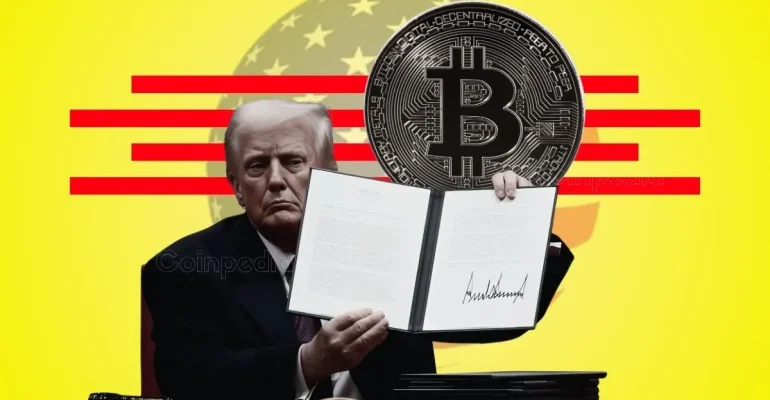Trump’s Strategic Bitcoin Reserve and What It Means
For years, Bitcoin has been a symbol of defiance, its reputation tethered to Silk Road’s dark web transactions and whispers of illicit finance. But overnight, President Donald Trump turned that narrative on its head. With the stroke of a pen, the United States has cemented its role in the digital asset revolution, signing an executive order to establish a ‘Strategic Bitcoin Reserve and U.S. Digital Asset Stockpile’.
It was a moment that felt inevitable. The same country that once vilified Bitcoin is now treating it like gold.
Twelve years ago, the fall of Silk Road seemed like the beginning of the end for Bitcoin’s legitimacy. In 2013, Ross Ulbricht’s billion-dollar marketplace was dismantled, and the U.S. government auctioned off thousands of bitcoins seized from the operation. At the time, critics scoffed at Bitcoin’s potential, calling it a fad for criminals and libertarian dreamers. (Interestingly, on Jan 22, Trump pardoned Ulbricht).
Fast forward to March 2025, and Bitcoin isn’t just an asset for hedge funds and high-net-worth individuals. It has entered the realm of geopolitics, national security, and monetary policy.
The reserve will be seeded with confiscated bitcoins already in U.S. custody, an estimated $17 billion worth of digital assets seized from criminals and fraudsters. But the U.S. won’t stop there. The Treasury and Commerce Departments have been tasked with expanding the reserve through budget-neutral means, potentially swapping other forfeited digital assets or even converting portions of America’s gold reserves into Bitcoin.
And here’s the kicker: the U.S. government will not sell any Bitcoin in the reserve. Unlike gold, which is actively traded, these holdings will be locked away as a store of value. The message is clear, Bitcoin has transcended its speculative phase and entered the big leagues of national reserves.
As expected, the market didn’t take the news in stride. Bitcoin initially dipped 1%, momentarily falling to $89,000, down 5% year-to-date. But those who’ve been around long enough know that volatility is just noise in a much larger symphony.
For reference, when the Bitcoin ETF was approved earlier this year, there was an initial price drop before an explosive rally. That ETF was a stamp of approval from financial regulators, an acknowledgment that Bitcoin was now a safe asset for institutions. This move by Trump goes even further, it elevates Bitcoin to the status of gold in the eyes of the U.S. government.
And that shift won’t go unnoticed.
Texas has already made strides in passing legislation that could allow the state government to buy Bitcoin directly. Other U.S. states, sovereign wealth funds, and central banks will undoubtedly follow. Nigeria, with its follow-follow policies, won’t be far behind. So, is this Bitcoin’s journey to $1 million?
Well, that could depend on Trump.
If this were any other president, the story might end here. But with Donald Trump, there’s always another layer, one that often involves personal profit wrapped in national policy.
Typically, when the U.S. seizes assets from criminals, they are liquidated to fund law enforcement or compensate victims. This time, however, the government is choosing to hold rather than sell Bitcoin, an unusual move that raises more questions than answers. And given Trump’s history of bending financial rules to his advantage, concerns about how this reserve will be managed are far from unfounded.
Consider the track record:
– Trump’s businesses have declared bankruptcy six times, a strategy he openly admits to using as a financial loophole.
– He once said, “I do play with the bankruptcy laws; they’re very good for me.”
– Trump University left students saddled with debt and empty promises.
– His memecoin project netted him a cool $350 million, while many of his loyal followers left holding the bag. We don’t know how much his wife has earned from her own memecoin.
Now, another red flag: the inclusion of XRP in the reserve. Ripple CEO Brad Garlinghouse, a staunch Trump ally, stands to benefit immensely. During Trump’s campaign, there was no mention of XRP—only Bitcoin. But Ripple, which holds over $100 billion worth of XRP, now finds itself in the mix. Was this strategic reserve designed to strengthen America’s financial future, or is it another play to enrich a select few insiders?
The risk here isn’t just political, it’s financial. If Bitcoin and XRP are manipulated to serve the interests of a few, the market could respond in ways that leave retail investors and everyday Americans bearing the brunt of the fallout. And when that happens, the question isn’t if the house of cards will come crashing down, but when.
There are aso a few unanswered questions: Normally, when assets are seized from criminals, they are sold to fund law enforcement or compensate victims. But if the U.S. government refuses to sell, where will those funds come from? Will victims of fraud be left empty-handed while the government hoards Bitcoin?
Regardless of Trump’s motives, this executive order is a game-changer. Bitcoin is now part of the U.S. strategic financial arsenal. Other nations will follow, Bitcoin’s status as digital gold will be further solidified, and the financial landscape will shift in ways we can only begin to imagine.
But will this be a fair and transparent reserve, or just another chapter in Trump’s long history of bending the system for personal benefit? That remains to be seen.
One thing, however, is certain: Bitcoin’s role in the global economy has just been rewritten.


